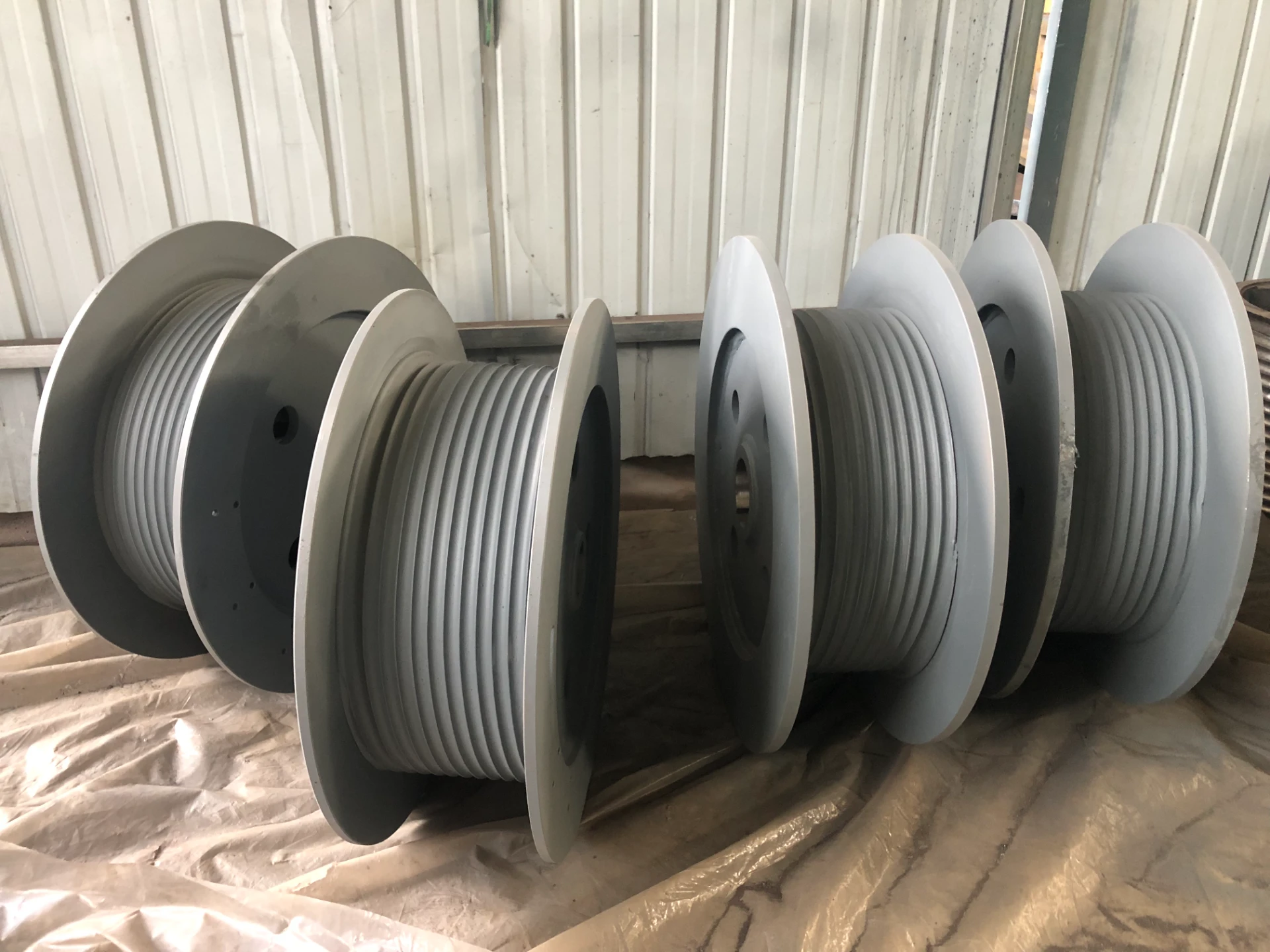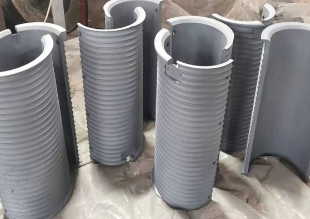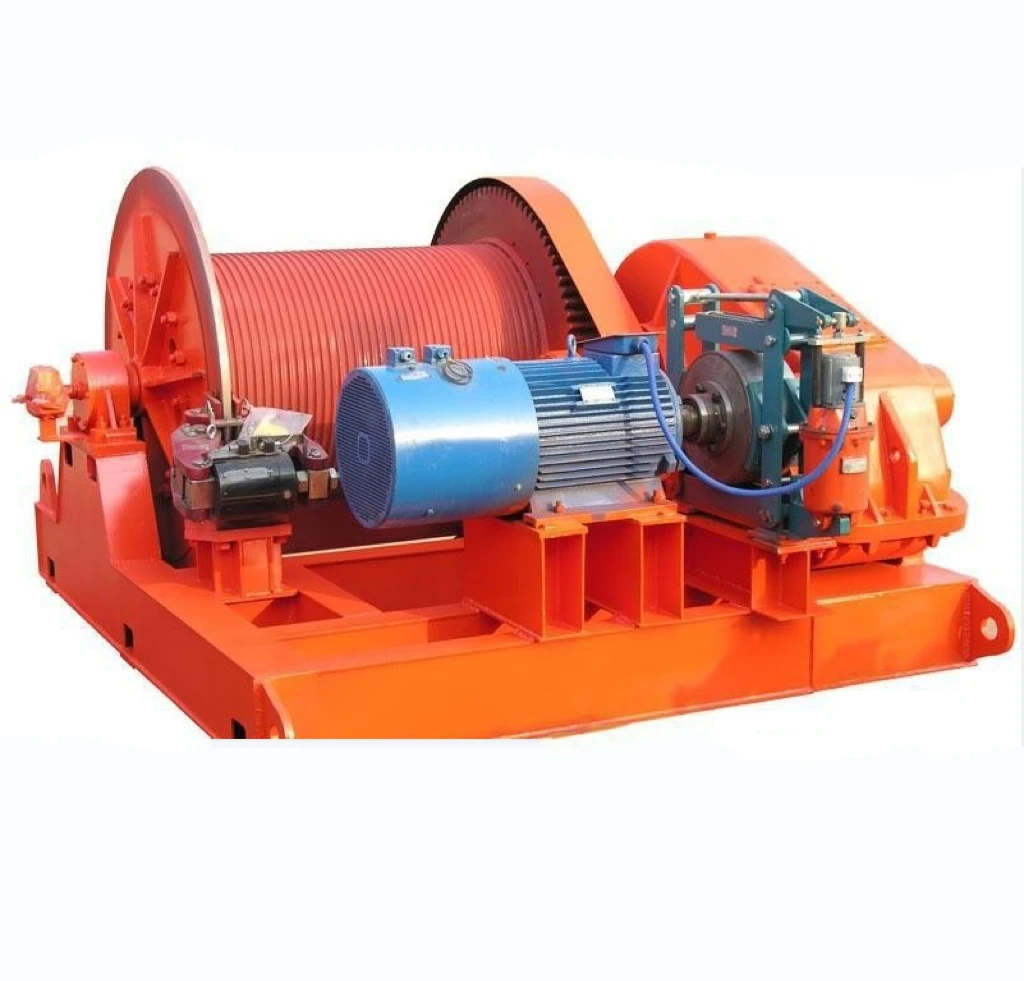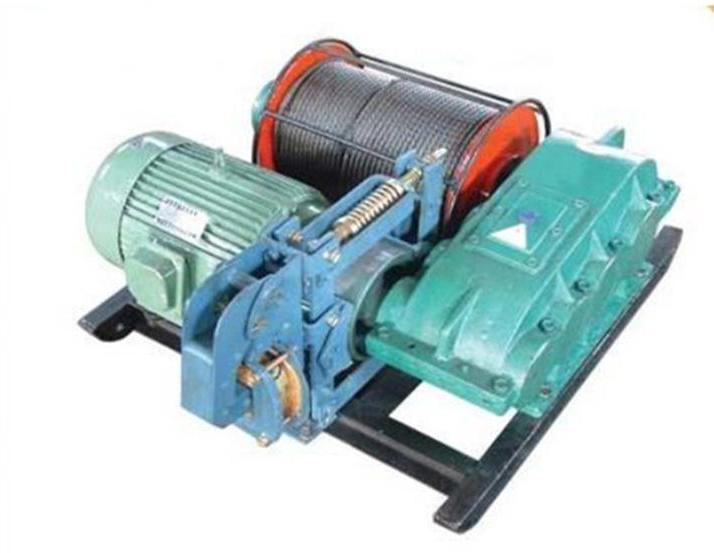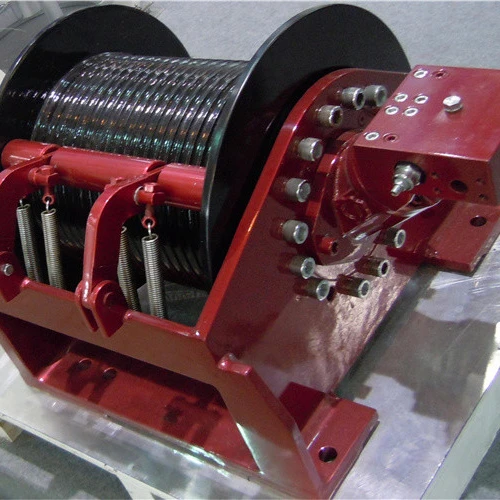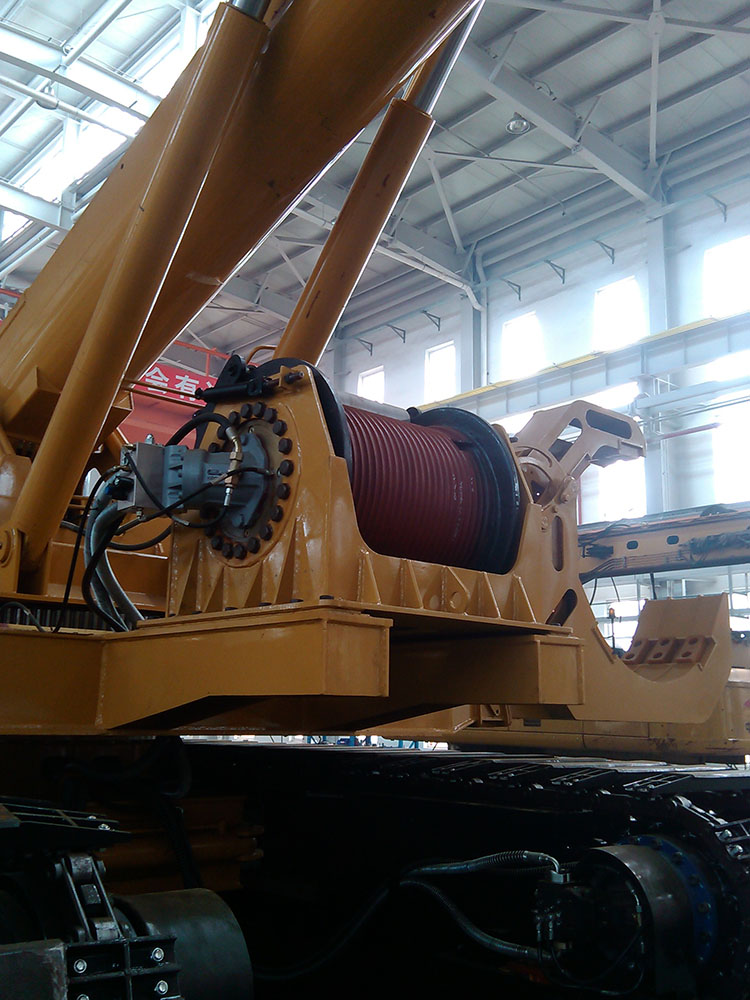Hydraulic Forestry Winch: Durable, Efficient Logging Equipment for Sustainable Forestry
Hydraulic Forestry Winches: Powering Sustainable and Efficient Timber Operations Worldwide
When it comes to managing forests responsibly while meeting increasing global demands for timber and biomass, the humble hydraulic forestry winch often flies under the radar. Yet, this piece of equipment plays a vital role in streamlining logging, reducing environmental impact, and improving safety — factors that matter on a global stage as industries seek both productivity and sustainability. Understanding how hydraulic forestry winches function and why they matter can illuminate their growing importance in modern forestry and allied fields.
Introduction: Why Hydraulic Forestry Winches Matter Globally
Forests cover roughly 31% of the Earth’s land area, according to the FAO Global Forest Resources Assessment, and the timber industry supports millions of livelihoods worldwide. Efficient, low-impact forestry equipment like hydraulic forestry winches helps meet the dual challenge of harvesting timber and preserving critical ecosystems. Data from the International Organization for Standardization (ISO) points to increased mechanization supporting safer, more sustainable forestry practices.
Yet, harvesting in steep or environmentally sensitive terrain remains challenging, with risks of soil damage, worker injury, and slow operations. Hydraulic forestry winches address these pain points — offering machines that can pull logs from difficult spots with precision and control. In developing regions where infrastructure is limited, such winches also empower local operators to capitalize on forestry as a livelihood without overly destructive practices.
Mini takeaway: Hydraulic forestry winches help global forest industries balance economic viability with environmental stewardship, particularly in tough terrain and emerging markets.Defining the Hydraulic Forestry Winch
In simple terms, a hydraulic forestry winch is a machinery attachment designed to pull heavy logs or forestry loads using hydraulic power. Unlike electric or mechanical winches, hydraulic variants draw force from a hydraulic system — often powered by tractors or forestry machinery — providing superior torque and fine control. This capability makes them invaluable for staggered pulls on slopes, snag compensation, and delicate load handling.
They are closely linked to modern forestry’s use of mechanization to reduce manual labor hazards and increase timber extraction efficiency while limiting ground disturbance. Humanitarian and development agencies have also taken note of such equipment to aid reforestation or post-disaster land clearing where heavy manual hauling is impractical.
Mini takeaway: Simply put, a hydraulic forestry winch is movable muscle for grappling with timber harvesting challenges safely and efficiently.Core Features of Hydraulic Forestry Winches and Why They Matter
1. Durability and Build Quality
Forests are not forgiving environments — rain, dirt, and rugged terrain demand winches made of tough steel, with sealed hydraulics resistant to contamination. Manufacturers nowadays often use high-grade alloys to prevent wear and corrosion, ensuring long service life even under continuous stress.
2. Control and Safety Mechanisms
Precise control is critical. Load-holding brakes, adjustable pulling speeds, and remote-control wireless units reduce risk to operators by allowing them to work from a safe distance or adjust tension smoothly. Many professionals say those features are game-changers when working on steep slopes or near sensitive ecosystems.
3. Compatibility and Scalability
Hydraulic forestry winches need to couple to various tractors or skidders, hence standardized mounting and adaptable hydraulic connections are a must. Some models also support multiple cable line speeds or multiple drum capacities to scale with project size or timber type.
4. Portability and Ease of Installation
In real-world forestry, a winch’s weight, footprint, and ease of mounting mean everything. Lightweight models or modular designs that are easy to transfer between machines speed up operations and reduce downtime — especially valuable in remote locations.
5. Environmental Considerations
Advanced winches now incorporate features to minimize soil compaction by enabling partial suspension of logs or reducing the need for heavy vehicle movement in delicate areas, ultimately aiding sustainable forestry practices.
| Specification | Typical Range | Remarks |
|---|---|---|
| Pulling Capacity | 5,000 - 12,000 lbs | Varies by model and hydraulic supply |
| Cable Length | 120 - 200 meters | Steel wire rope or synthetic options |
| Weight | 100 - 350 kg | Depends on frame and mounting system |
| Control Type | Manual lever / Remote wireless | Increasing adoption of wireless remotes |
| Operating Pressure | 150 - 250 bar | Must match tractor hydraulic system |
Global Uses & Real-World Impacts of Hydraulic Forestry Winches
Hydraulic forestry winches aren’t just tools; they’re enablers of economic development, safer working conditions, and environmental care in many countries:
- Europe & North America: Used extensively in sustainable timber harvesting, especially in mountainous or protected areas where limiting soil damage is key.
- Latin America: Small-scale logging operations harness winches to access remote parcels, cutting down on manual labor injuries.
- Southeast Asia: NGOs employ winches in reforestation projects, helping plant nurseries clear brush or extract debris post-flood.
- Africa: Remote agroforestry initiatives depend on winches to move wood and clear firebreaks efficiently amidst challenging terrain.
For example, a forestry cooperative in British Columbia noted a 30% reduction in soil erosion risk after integrating winch-based skidding methods instead of full vehicle access roads.
Mini takeaway: From conservation zones to busy timber yards, hydraulic forestry winches prove versatile — equally at home in industrial and humanitarian forestry efforts.Advantages and Long-Term Value You Can Count On
There’s the obvious benefit: they make dragging 1,000-pound logs less backbreaking and more efficient. But the real value runs deeper:
- Cost savings: Fewer machines needed on site, less damage repair, less downtime.
- Worker safety: Remote controls let operators stay out of harm’s way.
- Environmental impact: Less soil compaction and selective timber extraction preserve biodiversity.
- Durability and reliability: Solid engineering means a dependable partner over years, sometimes decades.
- Community empowerment: Smaller operators in developing regions gain mechanized capability affordably.
Frankly, it also taps into a more emotional side — the dignity of safer work, the peace of mind that careful logging affords future generations, the pride in increasing productivity without sacrifice.
The Future of Hydraulic Forestry Winches: Innovation Meets Sustainability
What’s next? We’re edging closer to eco-friendly hydraulics powered by electric pumps that reduce fossil fuel dependency. Some startups are experimenting with IoT-enabled winches — monitoring cable tension and machine health remotely in real-time. Automation paired with AI may soon make complex logging operations more precise than ever.
Material science also plays its role: lighter, stronger alloys or synthetic ropes that last longer and resist wear promise less frequent maintenance and environmental leakage.
Plus, stricter international standards (think ISO) push manufacturers to create winches that score better on emissions, recyclability, and safety — all good news for the planet and operators alike.
Challenges & How Experts Tackle Them
Of course, hydraulic forestry winches aren’t magic. Too often, challenges arise:
- Hydraulic system incompatibility: Mismatched pressures or flows can strain machines. The solution? More universal connection standards help, as do adjustable control valves.
- Training gaps: Mishandling cables or controls can cause accidents. Comprehensive operator training and intuitive remotes are vital.
- Maintenance needs: Regular seal replacements and cleaning keep hydraulics happy — but might be neglected in remote zones.
- Cost barriers: For small operators, the upfront price can be steep. Leasing models and cooperative ownership schemes show promise.
With steady improvements in design and support, most of these issues are well on their way to manageable solutions.
FAQ About Hydraulic Forestry Winches
- Q1: How does a hydraulic forestry winch compare to an electric or mechanical winch?
- Hydraulic winches offer better torque at low speeds, smoother control, and withstand harsher environments than electric or mechanical variants. They also integrate well into forestry machinery’s existing hydraulic systems — a win for efficiency.
- Q2: What kind of maintenance does a hydraulic forestry winch require?
- Routine checks include inspecting hydraulic hoses for leaks, ensuring the cable remains in good condition, lubricating moving parts, and verifying control system function. Proper maintenance extends service life significantly.
- Q3: Are hydraulic forestry winches suitable for steep or inaccessible terrain?
- Absolutely. Their controlled pulling power allows operators to extract logs from slopes or tight spaces where vehicles can’t safely travel, reducing soil disturbance and improving worker safety.
- Q4: Can these winches be mounted on any tractor?
- Many models use standardized hitches and hydraulic couplers, but it’s important to verify compatibility with your tractor's hydraulic pressure and flow rates before purchase.
Vendor Comparison: Popular Hydraulic Forestry Winch Manufacturers
| Brand | Pull Capacity | Notable Features | Price Range (USD) |
|---|---|---|---|
| TimberPro | 7,000 lbs | Wireless remote, high corrosion resistance | $5,500 - $7,200 |
| ForestTech | 10,000 lbs | Modular design, adjustable drum speed | $6,800 - $8,500 |
| GreenWinch | 5,000 lbs | Eco-friendly hydraulic fluids, lightweight | $4,200 - $6,000 |
Wrap-up and Next Steps
Hydraulic forestry winches exemplify how smart engineering bridges the gap between tough realities of forestry work and the growing need for sustainable, safe logging practices. Choosing the right winch means balancing durability, control, and adaptability — all while considering environmental and social footprints. If you’re navigating equipment options or want to dig into specific specs, hydraulic forestry winch experts like those at LBS Winch offer detailed insights and tailored solutions.
In an era pushing for green yet productive forestry, these winches are quietly steering the industry toward a better balance — and frankly, that’s something to root for.
References
-
Double Drum Hydraulic Winch – Durable, Efficient Load Handling SolutionsNewsNov.25,2025
-
Hydraulic Drum Winches: Powering Heavy Lifting with Precision and DurabilityNewsNov.24,2025
-
Hydraulic Driven Winch – Reliable Heavy Lifting Solutions for Industry & ReliefNewsNov.24,2025
-
Hydraulic Crane Winch – Powerful & Precise Heavy Lifting Solutions | LBS WinchNewsNov.23,2025
-
Electric Over Hydraulic Winch: Efficient, Durable Lifting Solutions for Modern IndustryNewsNov.23,2025
-
Hydraulic Logging Winch Guide | Global Applications & InnovationsNewsNov.22,2025


